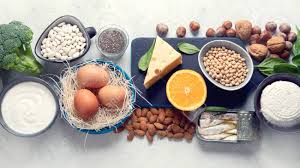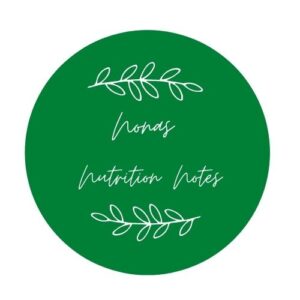Bone Health as we age: the roles of Calcium, Vit D, and Exercise.

Bone health as we age…
- Why improving bone health as we age, is essential for minimizing the risk of fractures, and why Calcium and Vitamin D are so important.
- How exercise is a factor
- When a supplement may be needed.
- What you should know about caffeine, alcohol, and oxalate.
Starting at birth, our bones grow in size and strength. In childhood and adolescence bone growth outpaces bone loss. Bone density peaks in our 20’s. It remains stable until about the age of 30, at which time bone density begins to decline, and bone loss exceeds growth.
With increasing age, as bones thin, we become more susceptible to health issues. For example, a decrease in mobility, and an increase in pain, especially back, hip, and neck pain. Consequently, we are more inclined to have accidents or falls with fractures.
Osteoporosis
Osteoporosis means “porous bone” and is a disease that occurs when the body loses too much bone. It causes bones to be weak and prone to breakage. Osteoporosis is the number one cause of fractures as a result of a fall.
Women are the most susceptible to osteoporosis after menopause due to decreased estrogen. However, by about the age of 65, the bone loss for men and women is about the same.
“Osteoporosis is the most common bone disease in humans” as reported by the Surgeon General. “It is characterized by low bone mass, deterioration of bone tissue ….and an increase in the risk of fracture”.
It is estimated that “about one out of every two Caucasian women will experience an osteoporosis-related fracture at some point in her lifetime, as will approximately one in five men”.
Bone mineral density to determine risk
Bone mineral density or BMD is the most commonly used characteristic for estimating the risk of bone fractures related to osteoporosis. It is an estimation of bone strength.
A dual X-ray absorptiometry or DXA scan is a tool used to determine BMD. Most commonly DXA scans measure the bone density of the hip and spine. The result is called a T-Score. T-Scores are defined as the standard deviation (SD) from the peak bone density of an average 30-year-old adult. Osteoporosis is defined when a T-score lies between -2.5 and -4 SD. Pre-osteoporosis or osteopenia is illustrated with a score of -1 to -2.5 SD.
Calcium requirements
Calcium is one of the most abundant minerals in the body, found mainly in the bones and teeth. A diet that is rich in Calcium plays an important role in keeping bones healthy and helping to slow the progression of osteoporosis, thereby reducing the risk of fractures.
Calcium also plays an important role with muscle contraction and nerve function. And is essential for normal heart rhythm.
Unfortunately, most americans do not get enough calcium in their diets, thereby leaving them at a higher risk for osteoporosis and other health concerns.
The recommended calcium intake for adults over the age of 60 is 1200 mg/d.
Foods high in calcium
| 10 Foods Highest in Calcium | Serving size | Estimated calcium in milligrams |
|---|---|---|
| Collard greens, frozen | 8 oz | 360 |
| Sardines, canned with bones | 3 oz | 325 |
| Ricotta, part-skim | 4 oz | 335 |
| Yogurt, plain, low-fat | 6 oz | 310 |
| Milk, skim, low-fat, whole | 8 oz | 300 |
| Yogurt with fruit, low-fat | 6oz | 260 |
| Mozzarella, part-skim | 1 oz | 210 |
| Cheddar | 1 oz | 205 |
| Greek yogurt | 6 oz | 200 |
| Cottage cheese | 4 oz | 125 |
| Feta cheese | 4 oz | 140 |
| Cottage cheese | 4 oz | 125 |
Calcium from dairy sources is the most easily absorbed. Cheese, yogurt, and milk contain significant calcium and are the major sources of calcium in our diets. Non-dairy sources of calcium contribute a smaller amount and aren’t as easily absorbed.
Most cereals and grains do not have much calcium unless they are fortified. Juices and some fruit drinks are available with added calcium.
Vitamin D requirements
Getting enough Vitamin D is just as important as calcium when it comes to bone health. That is to say, it is essential that we consume an adequate amount of both.
Calcium absorption is improved when there is adequate Vitamin D. In other words, Vitamin D enables our body to use Calcium more efficiently for increasing bone health. Vitamin D also helps improve muscle strength and consequently decreases the chance of falling and fracturing.
Vitamin D can be obtained by exposure to sunlight and from dietary sources. However, the amount of Vitamin D produced from sunlight varies.
For example, the time of day, where you live, and the color of your skin are all factors limiting the amount of Vitamin D you absorb from the sun. Elderly persons or those who are house-bound may not get outside often enough and consequently have limited sun exposure.
The recommended daily allowance for adults >70 years old is 800 iu/day.
Vitamin D Food Sources
| 5 Foods Highest in Vit D | Serving Size | IU Vit D |
|---|---|---|
| Codliver oil | 1 tbsp | 924 |
| Grilled Salmon | 3 oz | 284 |
| Grilled Mackerel | 3 oz | 352 |
| Tuna, canned in brine | 3 oz | 144 |
| Sardines, canned in brine | 3 oz | 184 |
In addition to the foods in the table above, some dairy products, such as milk and yogurt, and some orange juice brands, are fortified with Vitamin D. Fortifying foods adds to their nutritional value. Consequently, including foods fortified with Vitamin D increases the options available to meet your needs.
The role of exercise
Exercise also plays a role in bone health. For instance, it increases muscle strength and improves balance and posture, thereby preventing falls. Weight-bearing exercises in particular, such as walking, dancing, hiking, climbing the stairs, playing tennis, and jogging. These are activities that work against gravity and have the most impact on muscle strength and reduce the risk of falls. Resistance exercises, such as weight lifting can also strengthen bones.

Exercise regimens should be tailored to the individual’s age and medical conditions and discussed with a physician prior to starting.
Fitness habits should be regular to be effective. “According to the Surgeon General, the optimal goal is at least 30 minutes of physical activity on most days, preferably daily”.
Who should consider a supplement?

When meal consumption and appetite are poor, a dietary supplement may be needed. In other words, Calcium and Vitamin D needs may not be met, if dietary intake is inadequate.
Also, those who follow a vegan diet or are lactose intolerant and limit dairy products may benefit from taking a calcium and vitamin D supplement.
Which calcium is best?
Not all types of calcium supplements are absorbed in the same way or contain the same percentage of elemental calcium. Elemental calcium is the actual amount of calcium usable by the body.
- Calcium carbonate is 40% elemental calcium. A 1250 mg tablet of calcium carbonate, contains 40% or 500 mg of elemental calcium. Calcium carbonate is the most constipating.
- Calcium citrate is 21% elemental calcium. A 1250 mg tablet of calcium citrate, contains 21% or a little more than 250 mg of elemental calcium. Calcium citrate has fewer side effects such as bloating and gas and is more easily absorbed in the body.
Vitamin D2 or Vitamin D3?
- Ergocalciferol or Vitamin D2
- Ergocalciferol or Vitamin D3
Some studies have shown Vitamin D3 to be more effective suggesting this it is related to its metabolism in the liver and kidneys. Other studies report no definitive difference between Vitamin D2 and Vitamin D3.
Both Vitamin D2 and Vitamin D3 are found in dietary supplements, however the most popular on the market, such as Nature’s Made, Nature’s Bounty, CVS, Caltrate, and Alive all contain Vitamin D3.
Supplements of Calcium and Vitamin D can be taken separately or in combination with each other.
A combination of Calcium 600 mg and Vitamin D 400 iu taken two times per day meets the minimum levels recommended by the Institute of Medicine‘s Dietary Reference Intakes.
Foods that hinder absorption
There are some foods that hinder calcium absorption, these include caffeine, alcohol, and foods high in oxalic acid.
Caffeine

Caffeine hinders the absorption of calcium. One study showed, one or two cups of coffee per day results in a loss of 4-6 mg of calcium, however, the association with bone loss was not supported.
In another study, “bone density did not vary by lifetime coffee intake in women who reported drinking at least one glass of milk per day during most of their adult lives”.
Coffee intake may play a minor roll in calcium absorption and bone health as we age, bone loss but further studies are needed.
Alcohol

Alcohol consumption may hinder the absorption of calcium and our bone health as we age. One study showed that consuming 1-2 drinks per day resulted in a 1.34 times risk of osteoporosis. Consuming >2 drinks per day resulted in a 1.64 times risk when compared with non-alcohol drinkers.
Oxalates

Oxalates are natural substances found in some foods. These substances bind to calcium in the gut and are excreted, therefore hinder the amount of calcium available for absorption.
Oxalates that are not bound with calcium are excreted through the kidneys. If there is too much oxalate, crystals may form and develop into a kidney stone. Persons with kidney disease should limit foods high in oxalates.
Foods high in oxalate include nuts and legumes, rhubarb, spinach, and beet greens, chocolate, coffee, and beer.
In conclusion…
while aging is inevitable, we can improve bone health and slow the progression of diseases such as osteoporosis,
First, by consuming a healthy diet, rich in calcium and vitamin D.
Second, by getting out to get sun exposure
Third, by engaging in walking or another form of weight-bearing exercise to improve muscle strength, thereby lowering the risk of falls and fractures.
Fourth, by limiting caffeine, alcohol, and foods high in oxalates.
The younger healthy eating and exercise habits are established, the better the outcome. But it’s never too late to start. Even making one change at a time will lead to a healthier you!

